
22 minute read
On Set
L to R: B operator/2nd unit DP Matt Irwin (associate member), B 1st assistant Ryan Prouse, B 2nd assistant Matt Muszalski and dolly grip Axel Green on the set of Resident Evil in Hamilton.
Cinematographer Michael Jari Davidson (associate member) caught between takes on the punk rock musical feature Stupid for You.

Associate member John Ker on set shooting a promo for cannabis company “dirt.”
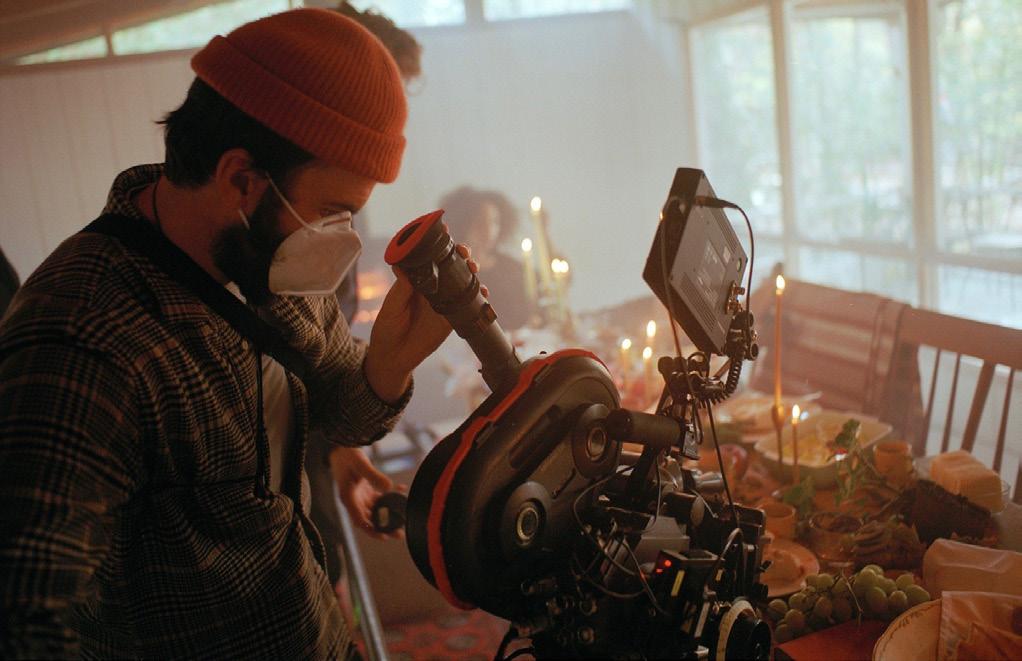
Credit: Kato Ferrer
Credit: Serge Desrosiers csc

Teleporting the Viewer: David Greene csc, asc


Calin Popescu as Milos in Impulse Season 2, Episode 4, "The Moroi."
By Trevor Hogg, Special to Canadian Cinematographer
Images*: NBC/Universal
ack in 2008, filmmaker Doug Liman released a movie adaption of the 1992 science fiction novel Jumper by Steven Gould about a young man with the ability to teleport being hunted by a secret society. Flashforward a decade later, Liman revisited the premise by directing the pilot episode of a YouTube Premium series called Impulse with Maddie Hasson taking over from Hayden Christensen in the lead role. Over the course of the entire two-season run, David Greene csc, ASC was responsible for shooting 12 of the 20 episodes, with him receiving a 2020 CSC Award for Dramatic Series Cinematography for the installment known as “The Moroi.” “It was important right from the beginning to our showrunner Lauren LeFranc and executive producers David Bartis, Gene Klein and Doug Liman to be grounded in all of our choices,” Greene notes. “We didn’t want to go the ‘superhero’ route. This path that they sent us on was a tremendous strength of Impulse, giving the subject matter an approachability to the audience. I feel so blessed to have met and worked with these wonderful people. “You can’t compare one project to the next as each has its own visual language and existence,” according to Greene, who has previously worked on Beauty and the Beast, 12 Monkeys and American Gods. “It was interesting working with YouTube as this was one of their first experiences with scripted drama. They were so encouraging and supportive of the entire creative process.” The fundamentals of storytelling do not change whether it is streaming or television, the DP maintains. “As our industry continues to develop with streaming services, web-based drama and new formats and viewing options popping up in the last number of years, one thing remains constant – we are telling stories and approach our material in the same way, regardless of format or distribution. I didn’t find any differences with the production of Impulse David Greene csc, asc

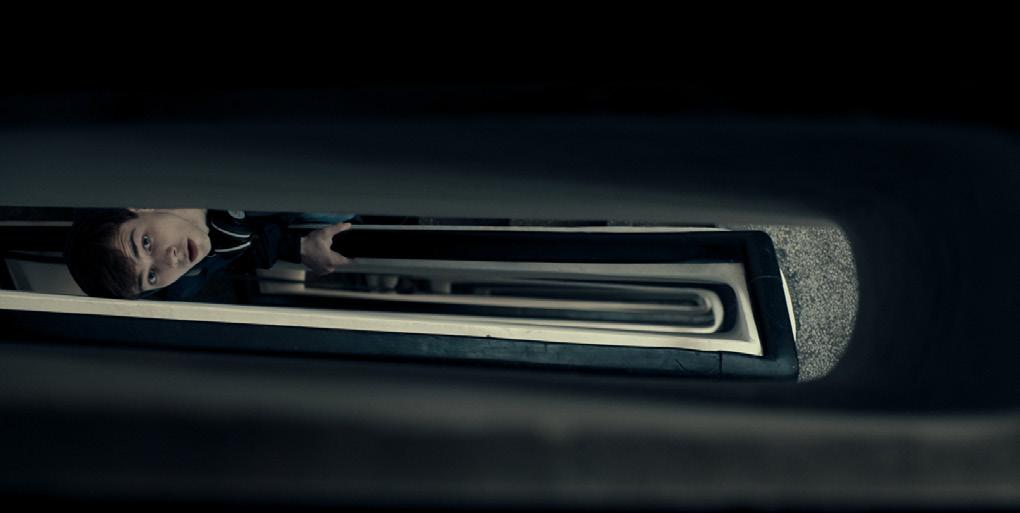
Bogdan Inacu as Young Nikolai.
versus other shows I have been involved in related to this,” he says. “However, one interesting aspect that I did note was that it is much easier to convince the studio to shoot in a wide aspect ratio. In fact, I often make the case for 1:2.00 or 18x9 as a shooting format, because almost all new phones are 18x9 aspect ratio and so much of our work ends up on a phone.” The streaming production was not entirely a different entity from its cinematic predecessor. “We were all trying to emulate the vision of the creator of these projects – Doug Liman. The pilot was shot by Pepe Avila del Pino with Doug directing. My job was to take the baton and run with what they had established,” Greene states. The story and look evolved over the course of Seasons One and Two, which “is normal as everyone is learning the language of the show,” he says. Other cinematographers on Impulse were Marc Laliberté csc and Colin Hoult csc. “I feel that any series should have alternating DPs,” Greene observes. “There is so much to prepare, and without the voice of the DP in prep, there is a tremendous deficit. At a certain point around Episode 107, I asked for an alternating DP and Colin was brought in. The producers had worked with him on Covert Affairs and he did a great job for us. Most series can and do benefit from having two DPs. I often find it curious that this is an accepted modality for cinematographers, but production designers have trouble convincing productions to have two art directors to work under them. Both should be the norm. The importance is that you must have a consistency in style episode to episode. Having this support for incoming directors is essential as I have always believed that each show has its own language, literally. It is our jobs to teach and share that language to incoming directors, while allowing them the creative freedom to enhance our dictionary, so to speak. The director/production designer/cinematographer relationship is critical. As a trio, we steer the ship in the correct directions, and maintain and further develop the style of a show.” With Daniel Grant csc shooting second unit on Season One, other key crew members for Seasons One and Two include gaffer Tom Starnes, key grip Malcolm Nefsky, A camera operators Ian Baird (Season One) and David Sheridan (Season Two), B camera operators Michael Carr (Season One) and Rob Barnett (Season Two), A camera 1st AC Rob Mountjoy, B camera 1st AC Andrew Macklin, A camera 2nd AC Sarah Warland, B camera 2nd AC Courtney Graham, as well as DIT Josh Jinchereau. The majority of the principal photography took place in Toronto and Hamilton. The shooting schedule was similar for Season One and Two with

Virgil Serban as Serghey. Both images below: Bogdan Inacu as Young Nikolai.
preproduction being six weeks and principal photography lasting 17 weeks. “One interesting note was that we added a foreign shoot in Sri Lanka in the first season. Because the producers were well accustomed to doing this on previous shows, we added more foreign shooting in the second season which consisted of two weeks in Romania and three days in Spain,” he says. “[Executive producers] David Bartis and Gene Klein had the need on a previous show to send a small crew to shoot establishing and plate shots to blend with the shoot in Toronto. Soon they realized, ‘Why don’t we take the lead actor the next time we go overseas and have them walking to the building that we are establishing?’ This soon translated into carving out several weeks of shooting overseas with key crew from Toronto accompanying, but mostly using local crews to pull off the foreign shoot. They had a few rules – no night exteriors, minimal lighting and an agreement to keep things as simple as possible. Fast forward to Impulse, and their experience in this area was key to our success. We adopted all of their rules for the Sri Lanka and Spain shoot, as it was all day exterior. In Romania, we had more days and more story to tell; however, when we did go inside for some of our interiors, we approached the lighting as simply as possible. In one case, we planned to shoot our lead character skulking through an abandoned mansion. It was interesting working with YouTube as this was one of their first experiences with scripted drama. They were so encouraging and supportive of the entire creative process.



Scene from Impulse Season 2, Episode 4, "The Moroi."
That sequence was written as night; I asked that we adjust for dusk. We heavily treated the windows with ND 9, ND 6 and 3/4 CTB, as I recall, and then complemented with lighting on the inside for our dusk look.” A signature visual effect and story point is the ability for characters to teleport. “A teleport was simply someone not being there and then appearing,” the DP explains. “However, in the beginning when Henrietta ‘Henry’ Coles [Hasson] is starting to understand her powers of teleportation, she was clumsy and crude, such as falling from the ceiling. The idea was that her motion from the ‘A’ side would dictate the motion on the ‘B’ side. Visual effects would shoot a clean plate of the room and then have her fall from the ceiling with the help of stunts or have her roll into frame. Special effects would add air canon bursts to move items in the room.” Asked why he thinks Episode 204, “The Moroi,” won a CSC Award, Greene responds, “Any project that gets recognition is ultimately rooted in the emotion. There was something that was going on with the script, performances, and the way that we captured it that was appealing. I love something about every scene in the episode. If I were to identify one, it would be the opening scene because of what it does to very quickly develop the relationship between Milos and Young Nikolai. Over a simple piano lesson, we learn about their deep love for each other, their worries about the war, and the hole in Nikolai’s heart that will become the overarching motivation for the older Nikolai in our series.” Handling the directorial duties was Jill Robertson. “Jill is a wonderful person and a tremendous artist with a strong vision,” Greene says. “She approached the material from a feature filmmaker perspective. I believe that her episode was the strongest that we produced. It had soul and emotion that were carried throughout.” “The Moroi” required a departure from the look of Impulse as it was a backstory to one of our antagonists,” Greene reveals. “My DIT Josh Jinchereau and I developed a LUT that was in the wheelhouse of the show yet took it in a new and interesting direction that we all felt added an important patina to the episode.”
Principal photography took place in Toronto and Romania. “Finding locations seemed seamless from the start,” he says. “We had a great church in Toronto for the opening, and our production designer Britt Doughty had built us a fantastic set for the apartment. The locations in Romania were all superb. Each location added a tremendous visual value to the episode. We had the benefit of a really strong production team in Romania who had been given creative marching orders and found us a wonderful selection of locations that the Toronto team were able to narrow down while in Toronto. Once in Romania, we spent several days scouting our favourites and in each case had exceptional locations to shoot while there. There is one interior courtyard space where Westly and Young Nikolai have a conversation. It was a gorgeous, courtyard interior— long and narrow with skylights at the fifth floor. I added a few florescent fixtures to the structure of the location. I gave them a warm tone and that was a nice contrast to the cooler dusk light in the location, and then controlled the skylight with large solids to keep the light on the guys not top lit, but more back lit. This was originally written as a night scene, but I felt that we would spend far too much time and money lighting that scene, so I pitched it to be dusk. It worked well and I am quite happy with the results.” The aspect ratio was 2:1 with the resolution being UHD. Two ARRI ALEXA Mini cameras and Leica lenses were supplied by Sim. “I certainly leaned into the wider end for lensing,” Greene explains. “29 mm closeups were normal for us, but in “The Moroi” we often used the 25 mm, especially with the character Milos, the young boy; that was a strong choice which brought a great deal to his story. We called the 25 mm ‘The Milos Lens.’ “Every show has a challenge on an hourly and daily basis,” Greene states. “The process of pushing through each day and striving for the best is what surfaces as the greatest challenge. Every day is hard but rewarding. I just want the audience to experience the story and performances; that is the purpose of all of this.”
Every movie deserves a great line.
Cinema Line

NEW!
Venice PXW-FX9
The Sony FX3 is the lightest, smallest addition to Sony’s coveted Cinema Line, a new compact cine cam about the size of a mirrorless camera. It’s packed with pro-level features allowing single-operator content creators to capture rich, professional-looking cinematic 4K video up to 120p with incredible ease. Another recent addition to the Cinema Line series, the FX6 is a C4K portable general-production powerhouse featuring Sony’s variable eND, user LUTs, Dual Base ISO, time code and more. And the FX6, FX9 and Venice are Netflix approved!
To learn more about Sony’s Cinema Line cameras, please contact Vistek’s Commercial Solutions Group at 1-866-707-0785.
FX6 FX3
FX3 FEATURES:
• Full-frame back-illuminated 12.1MP Exmor R CMOS sensor • 10-bit 4:2:2 colour and 15+ stops of dynamic range • S-Cinetone, S-Log3, HLG and Rec.709 gamma • Internal fan to prevent overheating • 5-axis in-body image stabilization • ISO range of 80 to 409,600
Sony A7S MK III Extreme Adventures
By John Banovich csc
John Banovich csc, soc on top of the Purcell Mountains.

Credit: Alexander Banovich

John Banovich csc, soc with the (L-R) Sony Venice, FX9 and A7S III in Nichyeskwa Creek
Ican hear them, crunching in the thick west coast foliage as they bulldoze their way closer to the river and closer to me. But I cannot see them – grizzly bears. I have wormed my way through this bug-infested tangled mess of shrubs and brush with a lightweight tripod, the Sony 600 mm G Master telephoto prime and the new Sony A7S MKIII mountcsc , soc ed to the rear. I’ve captured this species beCredit: John Banovich fore, but typically on the Sony VENICE, F55 or FX9. Even with a sizable crew, it would be a serious endeavour to get a larger package in there. Needless to say, with all those people and all that noise, the bears would most likely find another area of the river to fish, so having a very lightweight and compact package is imperative to getting these types of shots. With this COVID-19 virus upon us, it makes for crew challenges, so on one trip I brought my nephew and a couple of others, as well as my young son. This made for some great bonding time, but it was also an opportunity for them to experience more of the work I do. My nephew Alexander was great to have along as he has years of bush experience and was very helpful carrying gear and watching our backs. John Michael, my 11-year-old son, took a real interest, bringing his own mirrorless camera and a long zoom lens. He captured some great images. The drive really wears on me, but I must utilize as much daylight as possible, which means long

csc , soc Credit: John Banovich
Grizzly bear cub photographed in the Alberta Rocky Mountains.
hauls in and out of darkness, trying to film during sensitivity of the camera and the clean skies, I took sun hours. Once I leave the pavement, it becomes advantage of the aurora borealis with great results. a different type of driving, carefully manoeuvring We encountered two sizable herds of northern cariold mining and logging trails left in poor condition. bou in numbers I have not seen in more than two The payoff is huge, though, climbing up more than decades. It was a fabulous experience. Thus, I am 2200 meters to the base of a glacier very few have very pleased with the addition of the A7S MKIII to ever seen up close. It makes off-roading more like my arsenal of equipment, expecting to pack it with no-roading. me wherever my productions take me. I also did a solo trip with my new beloved equipment, 4x4ing high into the Purcell Mountains and was able to tuck all of this gear into my backpack and literally hike over mountainstops, filming alpine animals and scenery along the way. Shortly afterwards, my son and I flew up to the Northern Rocky Mountains in -20 C temperatures for a more fall, early winter adventure. Credit: John Banovich csc , soc With the amazing low light Three horned caribou photographed in the Northern Rocky Mountains.


Master Craftsmen: Shooting
By Anthony Sarracco
The feature documentary Tendenza, shot and directed by associate member Anthony Sarracco, explores the modernization of the Italian-Canadian textile industry. Produced by TLN Media Group, in association with Rebellion Films, the film received the Best Cinematography award from the New York International Film Awards in 2020, among other accolades. After a theatrical run, Tendenza was sold for television distribution and nationwide broadcast. Sarracco takes Canadian Cinematographer behind the making of the film.

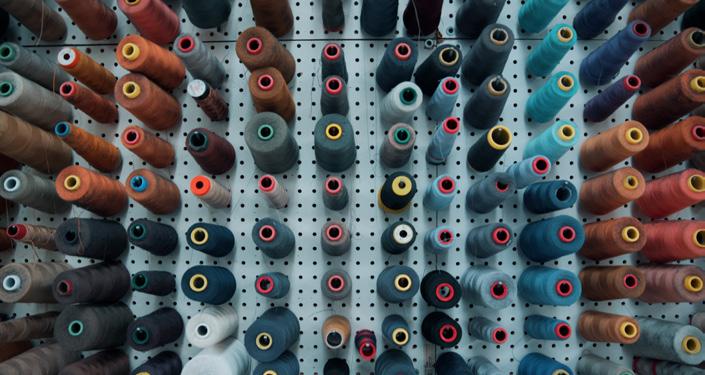
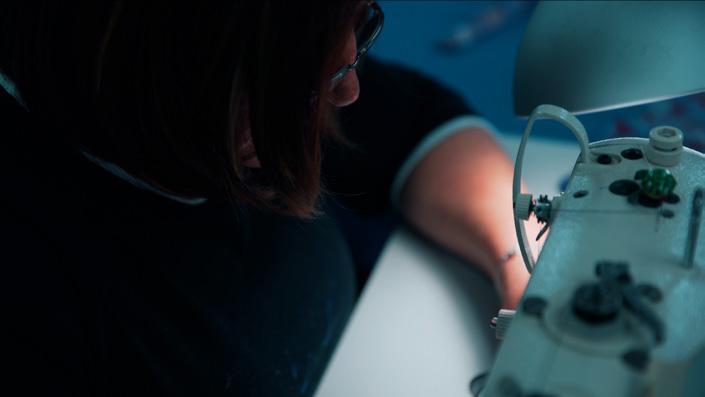
Left: Carmine Lauro in Naples, Italy. Above: A master seamstress in Postiglione, Italy.
All images credit to: Rebellion Films
Napoli. I have experienced the city on different occasions throughout my life, but none was more special than experiencing the beauty and the mayhem with one of its native sons. There is a buzz in the city centre that is like no other city I have visited. The energy is nearly palpable. Here, we interviewed masters of the textile industry. Artists. Craftsmen that have fashion and textile running through their veins, implanted in their DNA. It is here I come to realize the power a piece of fabric has on the world.
PREPRODUCTION
While preparing for this shoot there were many things that weighed on my mind. Our two main protagonists, whose story would move the narrative forward, were Carmine Lauro and Salvatore Parasuco. Both natives of Italy, Carmine being from Napoli and Sal from Sicily. Both on very opposite ends of the retail business. But both relentless in their pursuit of fulfilling a lifelong passion. Three major concerns swirled around during preproduction. The first was filming a documentary about their businesses without promoting their businesses. Funding for the documentary will not permit direct promotion of any business. This is an issue, especially if the subject's name is the name of the company. Second, was the fear of divulging key names of suppliers or designers from Italy that may cause the sharks to circle. Thankfully this problem evaporated as quickly as it was construed. Both men have solidified their suppliers’ loyalty in stone. There
is a certain code of loyalty, especially among the Neapolitans. To them this wasn’t just business, it was a matter of family. Lastly, there was security. Although beautiful, certain parts of Naples did have a reputation for being a little unsavoury. The Mariolas, a type of professional thief, are famous in Italy for their imagination they implore in making your stuff theirs. Some of the areas were far from the tourist zones and had been terribly scarred from the gang violence that transpired along those streets, years ago.
PRODUCTION
Some ways from Napoli Centro, Carmine and his lovely wife Lisa escorted us to one of their suppliers. After quite some time on the highway, we began our trek up the winding roads of a mountain. I asked Carmine what exactly he comes and purchases this far out. He responded, “Handkerchiefs and ties.” Handkerchiefs and ties? You come all this way for handkerchiefs and ties? The entire concept seemed absurd to me at the time, but then he made me understand what “made in Italy” really represented in the grand scheme of things. It is something made by a master craftsman. It is an ideology. A lifestyle that you are supplying to a client. Something that cannot be mass produced. The women sewing in that tiny factory, on top of that mountain, are from a long line of seamstresses. Third or fourth generation of seamstresses, a craft passed across an entire lineage. This is extremely rare to find in an age where everything is automated. In an age where the necessity no longer exists for that type of work, making the craft obsolete. Filming the workers
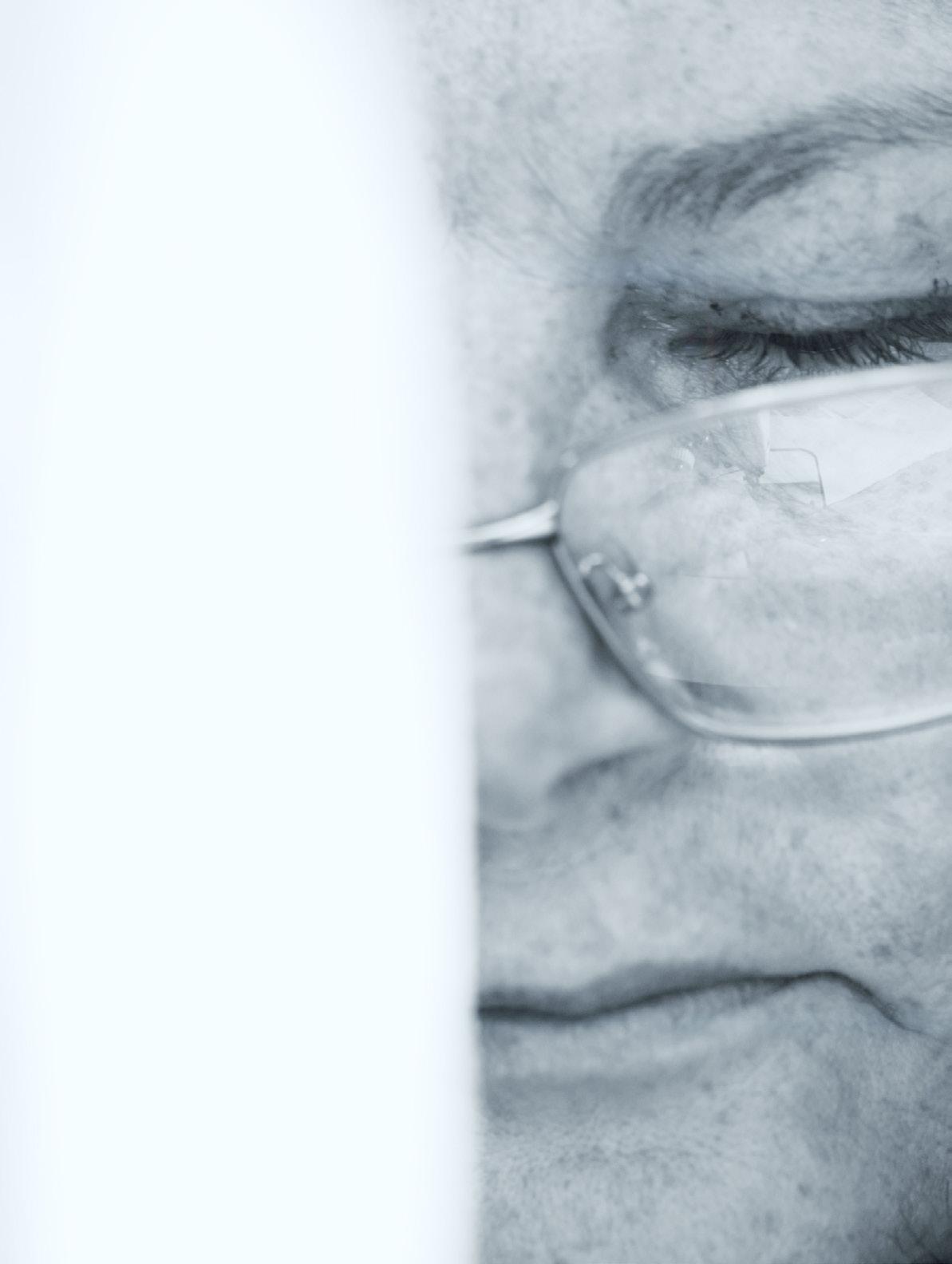




CONGRATULATIONS
to Jeremy Benning CSC and crew on the latest season of “The Expanse.” Thank you for choosing the ALEXA Mini, SkyPanel and WCU-4.
“Ever since we switched to the ALEXA Mini in Season 2, we continue to love the images we capture with this camera. Even more so now that we fi nish the show in HDR, where we can take full advantage of every last drop of latitude the sensor gives us. It still blows me away. The Mini is our only camera, and we carry three typically. Its small size is ideal for all the gimbal work we do and for fi tting it into cramped corners of some of our smallest sets. Additionally, the reliability is key… the Mini is just a solid camera that works all day.” — Jeremy Benning

WCU-4
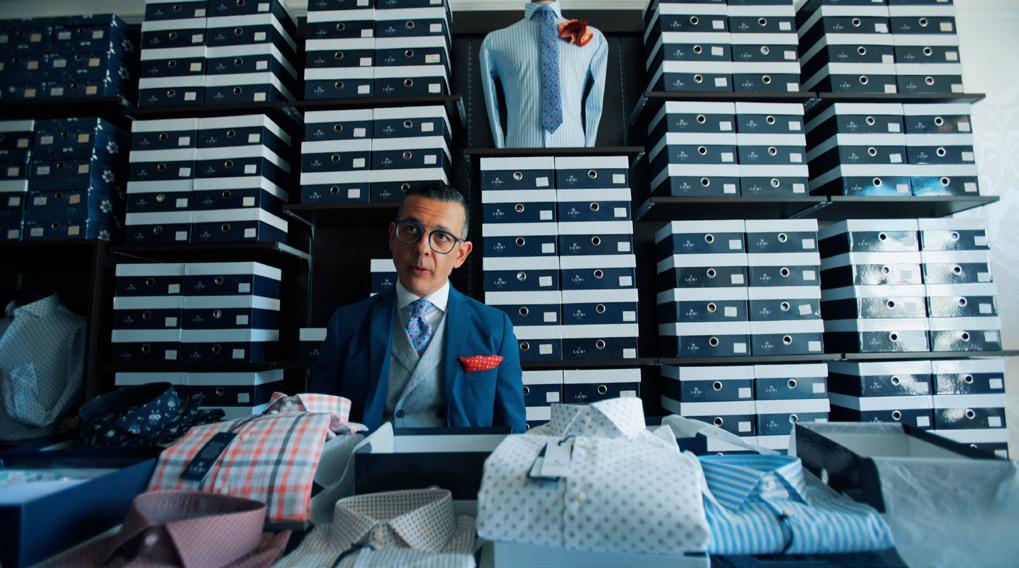
Carmine Lauro from his store Lauro Napoli in Montreal.
Carmine Lauro in Naples, Italy.
Salvatore Parasuco from Parasuco Jeans HQ in Montreal.
Salvatore Parasuco in Florence, Italy.
The port of Naples, Italy. from that small town was inspiring, to say the least. It forces you to understand that God is in the details. A similar revelation transfixed itself in our minds when we travelled through Tuscany with Sal. We went from the hustle and bustle of Florence to the existential piece of existence that is the Italian countryside. Here we met with a designer named Mauro. As we were filming the interviews, I noticed a man on the floor below us preparing for a feast. To my surprise, Mauro, had the local grocer bring us fresh fruits, vegetables, mozzarella and fish. All farmed and caught fresh. This was to serve as an antipasto for the incredible meal Mauro was conspiring to cook for us after the interviews were completed. It is here that Sal explains how much of his career was spent away from his family, growing the business. However, it was dealing with Italians like Mauro that made him feel like he was always surrounded by family, something that can rarely be attained on his travels to Asia. Here, business is mixed with culture, great food and memorable conversation. Here, you are treated like family.




POST
Ilove making documentaries because I find them to be a concentrated learning experience. It is like squeezing an entire university semester into a couple of days or weeks. You do as much research as you can before filming starts, but then, if you allow, your mind is blown wide open by facts. Facts you can only attain by having boots on the ground. The learning experience is visceral, and it is up to you
to communicate that sensation into a comprehensible story. We have all heard stories of child labour and how big brands use the services of manufacturers that may not have their moral codes in check but can get the job done at a reasonable price. This is something that troubled me in the editing process. I’ll tell you why. We had learned much on the subject of “fast fashion” while filming. The complexity and chain of textile manufacturing is so large and complicated that a brand may be supporting child labour without even knowing it. When you learn of something as diabolical as this, as a filmmaker, you kind of wish you had the ability to kick down the door to such a place and expose the operation on camera for the world to see. But this wasn’t the case. I struggled with the subject and was breaking my head to reconfigure our story in post. I soon came to the realization that this was not the mission of our film and at this stage of the game I could not reinvent the rules. All I can do is tell it in the context of which it affected the people who refuse to participate in that particular realm of the industry. So that is what I did.
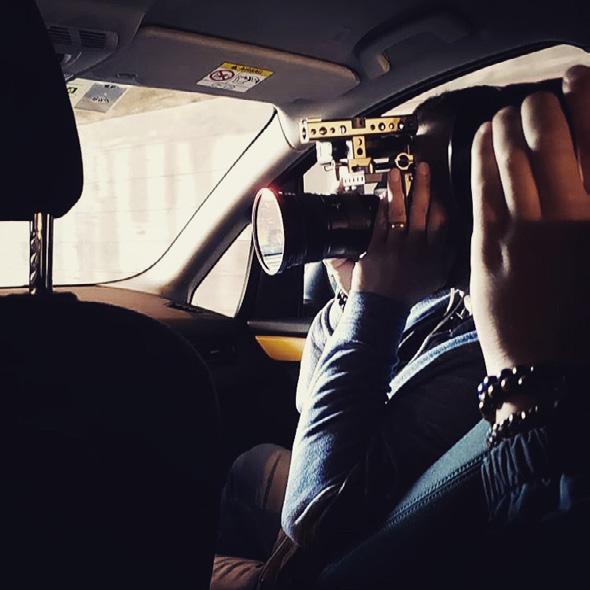
Cinematographers Anthony Sarracco (left) and Michael Franceschini behind the lens during the making of Tendenza.
NOW AT VISTEK!
Get ready to shake things up
The new KOMODO 6K digital cine cam marks a first for the renowned RED
brand, not just for its ultra-compact form factor but also for its revolutionary

19.9MP Super 35mm Global Shutter CMOS sensor, allowing you to capture
superb cinema-grade image quality with 16-plus stops of dynamic range
while eliminating distracting rolling shutter effects. It can record up to 6K
at 40 fps, 5K at 48 fps, 4K at 60 fps and 2K at 120 fps in REDCODE RAW
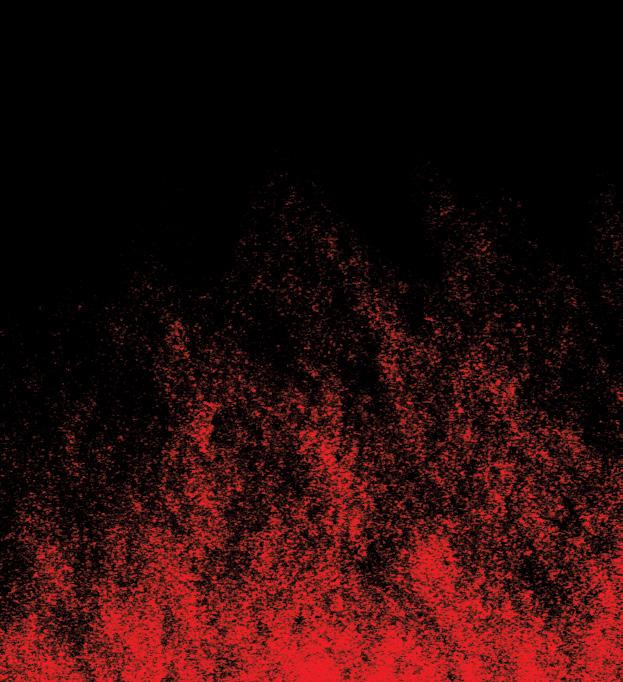
for unparalleled post-production versatility. The camera’s built-in RF mount
puts an array of Canon lenses at your disposal, and it comes with an EF-to-
RF adapter to extend your reach even further. For more information, contact
Vistek’s Commercial Solutions Group at 1-866-707-0785.







